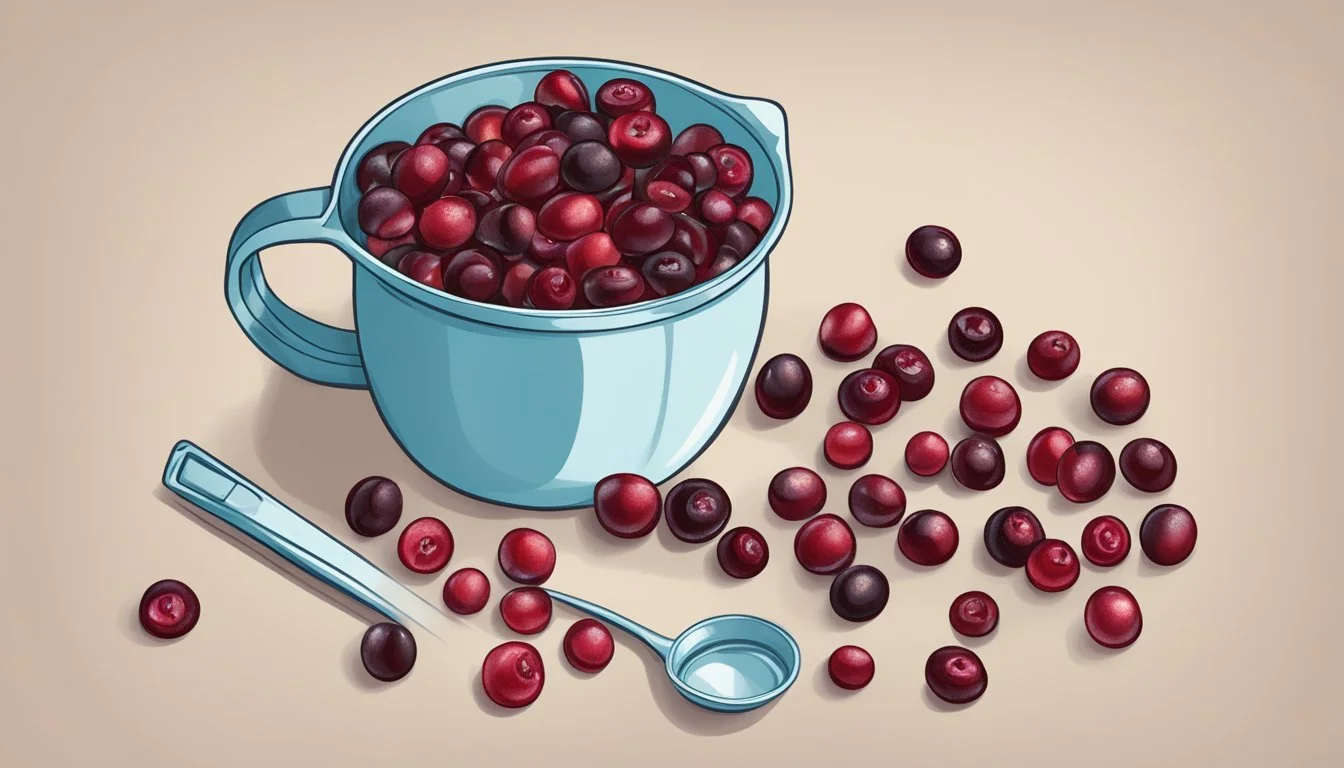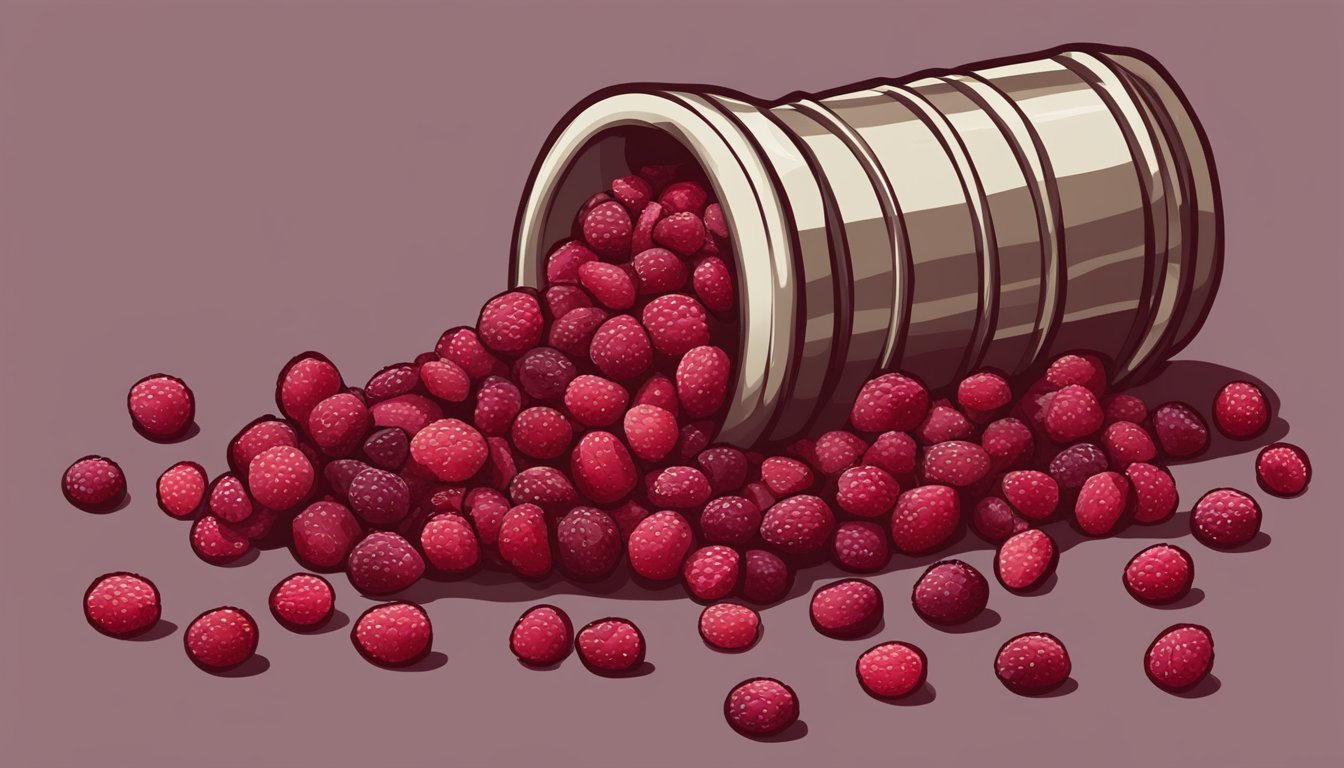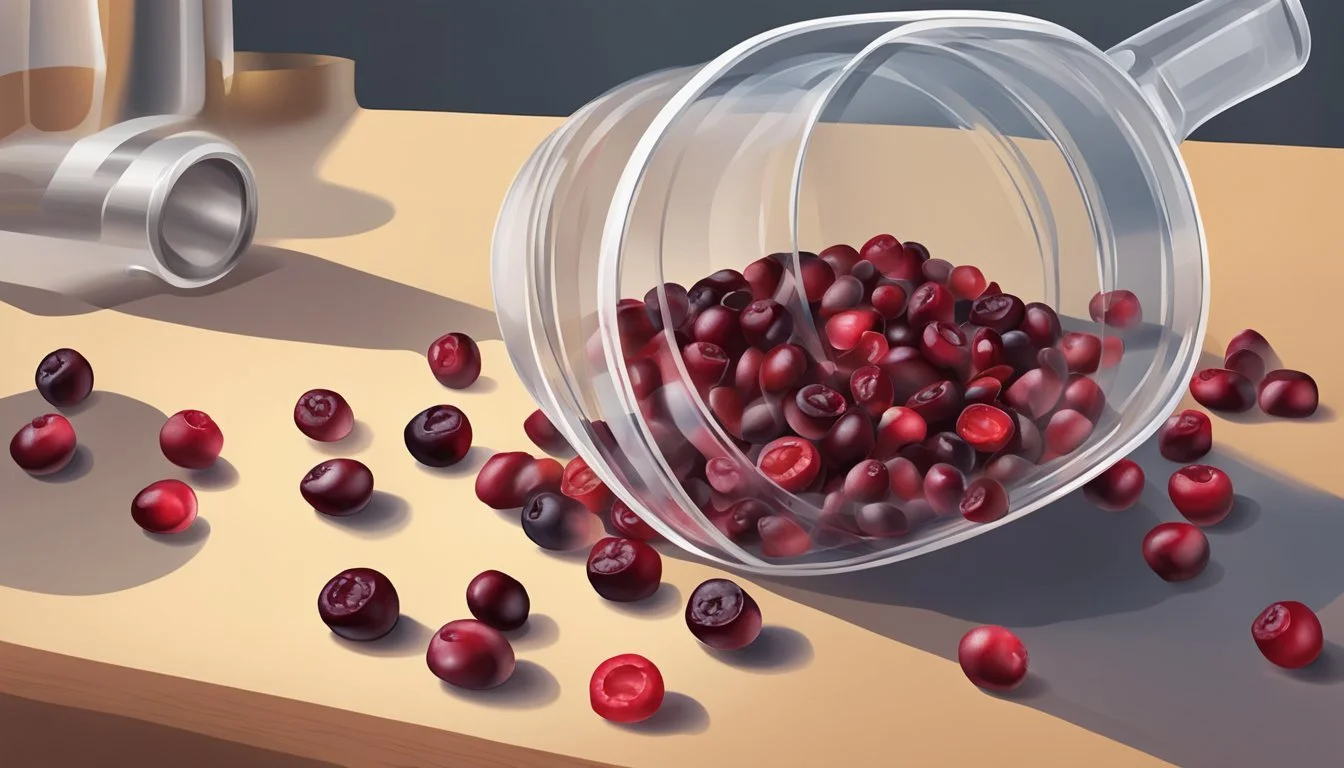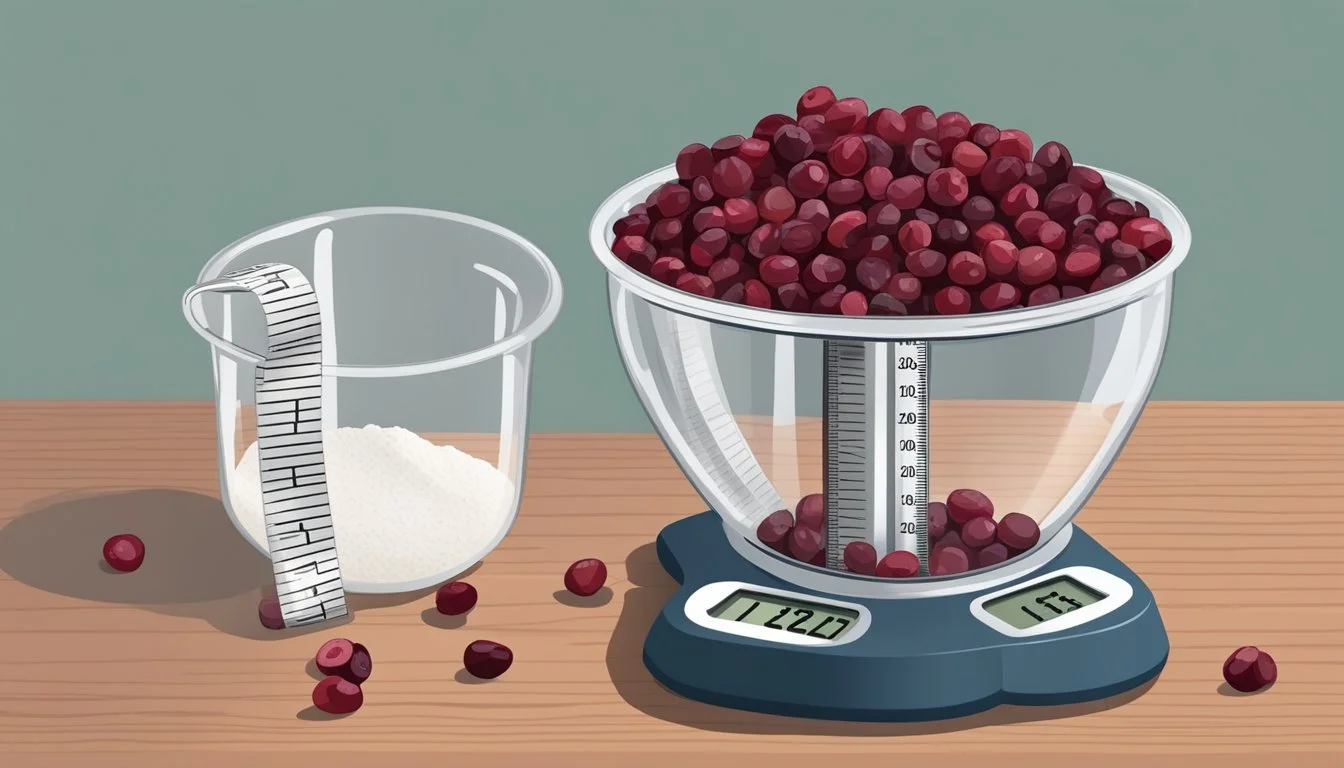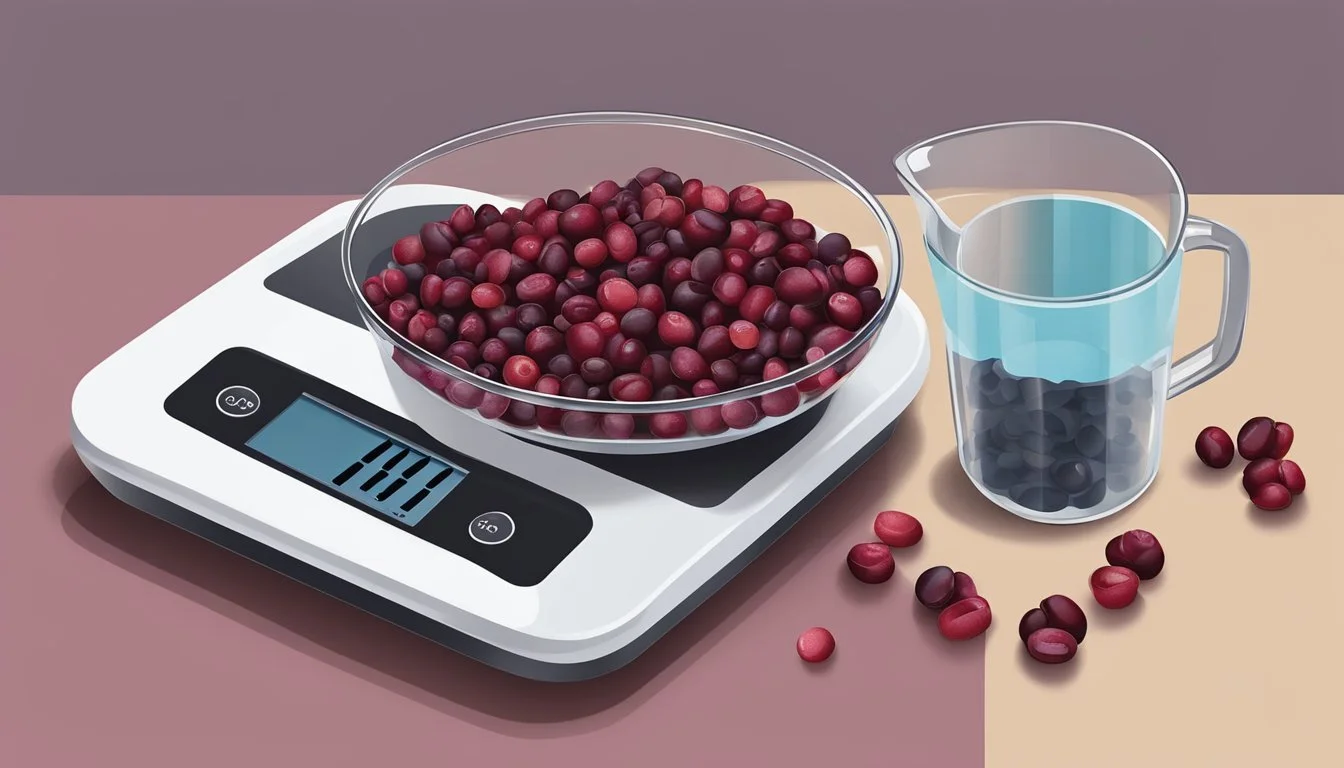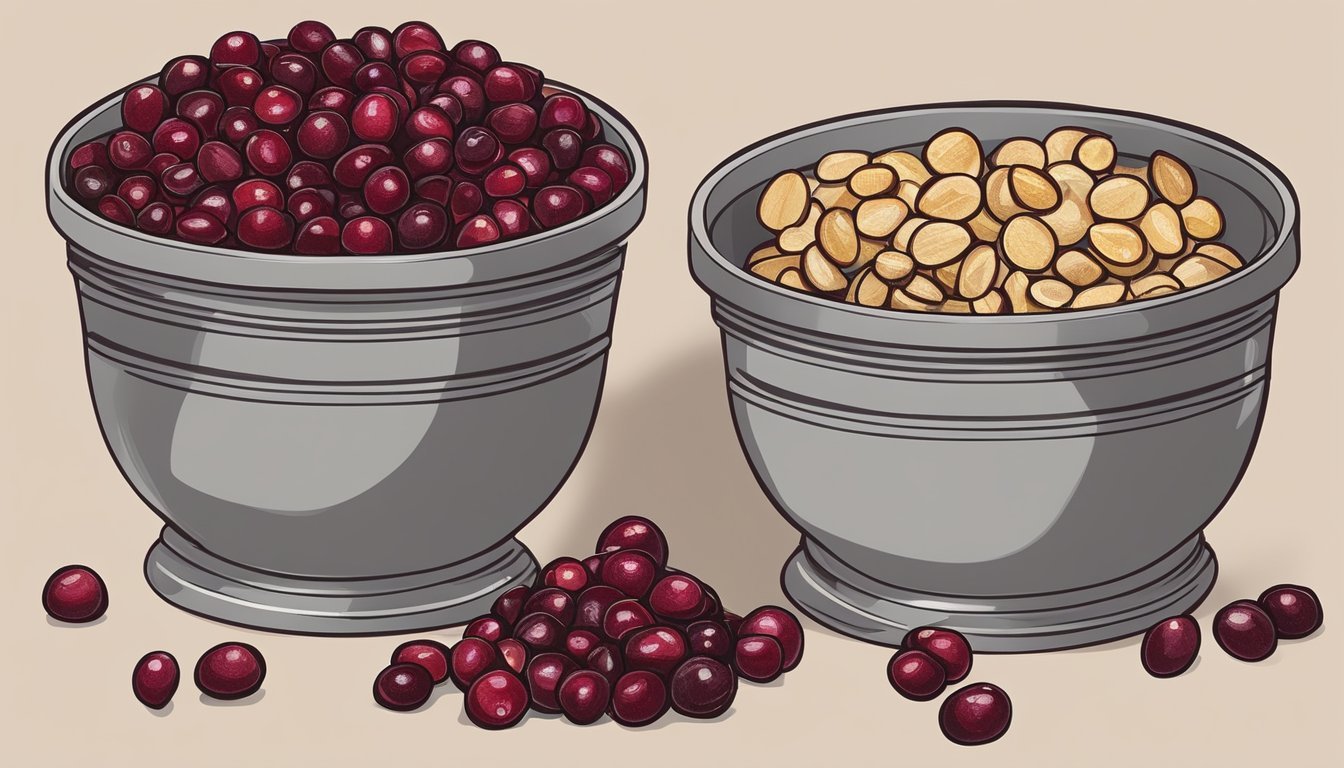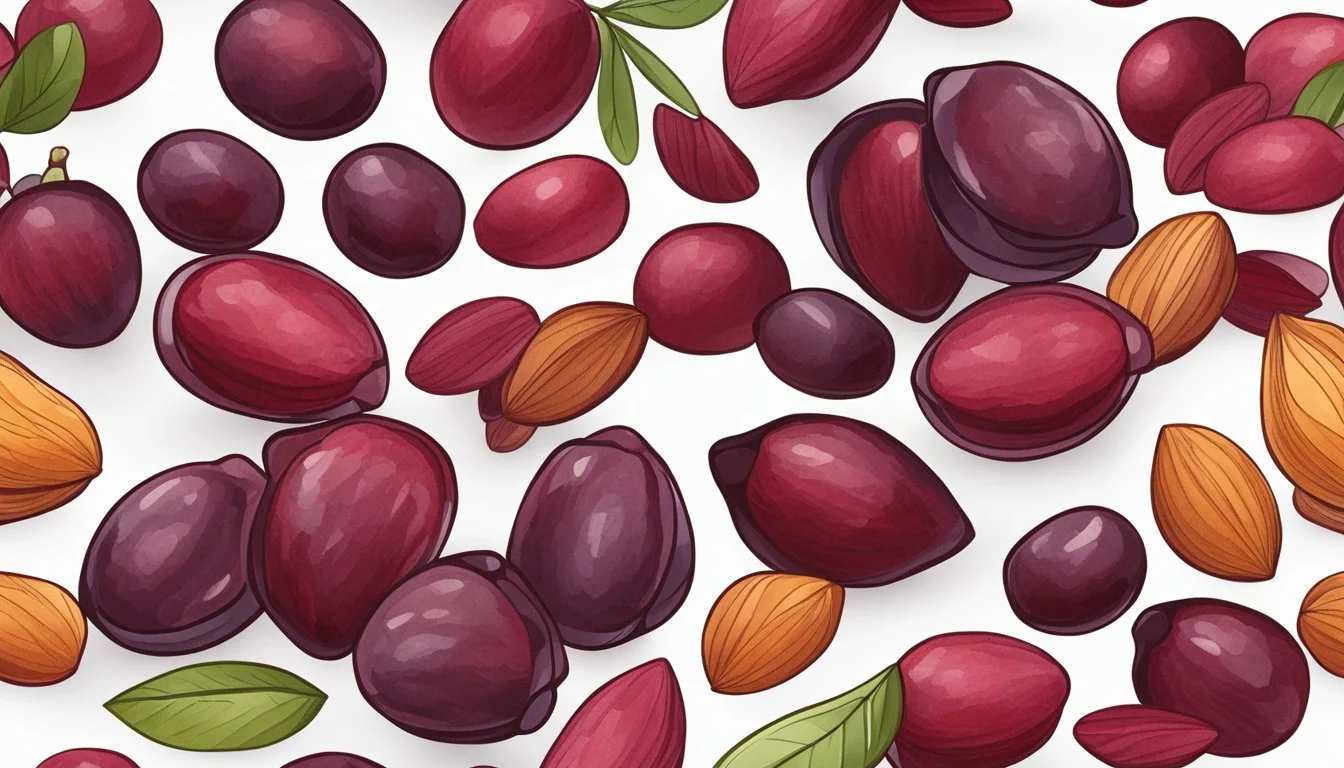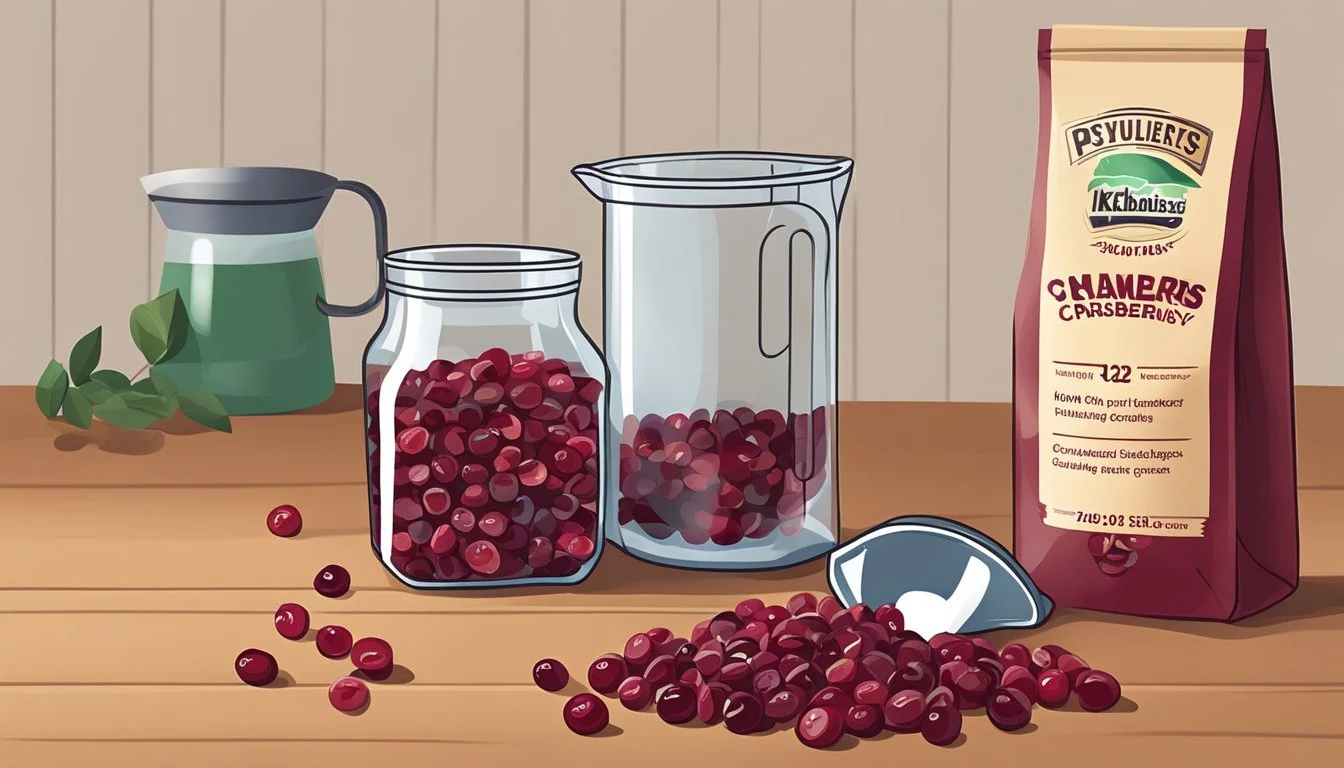How Many Cups in a Pound of Dried Cranberries
Quick Measurement Guide
Understanding the conversion of various measurements is fundamental in cooking and baking. It is particularly important when dealing with dried fruits, such as dried cranberries, due to their reduced volume compared to their fresh counterparts. Accurately converting from weight to volume ensures that recipes are followed correctly and that the intended balance of flavors and textures is achieved.
For dried cranberries, the conversion metric from pounds to cups is useful for both home cooks and professional chefs alike. A pound of dried cranberries roughly equates to 3.53 cups. This conversion can vary slightly depending upon the cranberry size and any potential compaction in the cup measurement. Precision in measurement guides the preparer in achieving the dish's desired outcome without compromising on taste or quality.
When a recipe specifies cranberries in pounds and one only has cup measures at their disposal, knowing this conversion is crucial. It eliminates the guesswork and potential for error, allowing for a smooth cooking or baking experience. The weight-to-volume conversion is an invaluable piece of information that enhances kitchen efficiency and the success of the final product.
Basic Conversion of Dried Cranberries
When converting the weight of dried cranberries to volume, it is essential to know that the density and texture of dried cranberries affect measurement accuracy. These conversions provide a helpful guide for recipe adjustments or when measuring ingredients when kitchen scales are not available.
Pounds to Cups
1 pound of dried cranberries is approximately equivalent to 3.49 cups.
Pounds Cups 0.1 0.349 0.5 1.745 1 3.49 1.5 5.235 2 6.98
Grams to Cups
For grams to cups conversion, 100 grams of dried cranberries equal about 0.85 cups.
Grams Cups 50 0.425 100 0.85 150 1.275 200 1.7 250 2.125
Ounces to Cups
To convert ounces to cups, note that 1 ounce is equivalent to around 0.29 cups of dried cranberries.
Ounces Cups 1 0.29 2 0.58 3 0.87 4 1.16 5 1.45
In these conversions, the weight to volume relationship is crucial as it provides the ratio needed for accuracy in cooking and baking. The density of dried cranberries, which is about 116 grams per metric cup or 3.9 ounces per US cup, is factored into these calculations.
Measurement Accuracy
When converting a pound of dried cranberries to cups, understanding measurement accuracy is essential. Weight is the most reliable method to measure dried cranberries since the volume can differ based on the size and compaction of the berries. Kitchen scales provide the precision needed for such tasks.
Accuracy has two prime aspects: repeatability and resolution. A good scale has high repeatability, meaning it gives consistent results for repeated measurements of the same weight, and fine resolution, allowing it to distinguish small differences in weight.
It's important to note that the weight to volume conversion can fluctuate due to factors like the moisture content of the cranberries and how densely they're packed into a cup. For instance:
Loosely packed: A person may end up with more cups per pound, reducing the flavor intensity.
Tightly packed: Fewer cups per pound can lead to an overly sweet or intense flavor.
To minimize errors in recipes, they should be consistent with their packing method when measuring dried cranberries by volume. Ideally, one should measure cranberries by weight with a scale, then use the following conversion:
Weight Volume 1 pound ~3 to 3.5 cups
Consistent measurement practices ensure that recipes turn out as intended, especially when scaling ingredients up or down. Always calibrate the kitchen scale regularly to maintain a high level of accuracy.
Cranberry Types and Varieties
Cranberries come in various forms, each suitable for different culinary uses. Understanding the distinctions between these forms is essential for recipe accuracy and desired outcomes in cooking and baking.
Fresh Cranberries
Fresh cranberries are typically sold in 12-ounce bags, which equates to about 3 cups when whole. They are known for their tart flavor and firm texture. Fresh cranberries are commonly used in sauces, baked goods, and as garnishes. They can be stored in the refrigerator for up to two months or frozen for longer periods.
Frozen Cranberries
Frozen cranberries are available year-round and can be used as a direct substitute for fresh cranberries in most recipes. When measuring frozen cranberries for recipes, it's important to use them while they are still frozen to ensure accurate measurement. A pound of frozen cranberries yields the same volume as fresh—about 3 to 3.5 cups.
Sweetened Cranberries
Sweetened cranberries, often referred to as dried cranberries or "craisins," are typically sold in prepackaged containers. They are fresh cranberries that have been dehydrated and sweetened. For culinary purposes, if a recipe calls for a cup of fresh cranberries and only sweetened cranberries are available, the amount should be reduced by 25%. Thus, 3/4 cup of sweetened cranberries would be used in place of 1 cup of fresh. Sweetened cranberries are ideal for snacking, salads, or baked goods.
Culinary Uses
Understanding the conversion of dried cranberries from pounds to cups is essential in both professional and home kitchens. Accurate measurements ensure the success of a variety of cranberry dishes.
Cranberry Recipes
Cranberry recipes often highlight the fruit's tart flavor and its ability to complement both sweet and savory dishes. Dried cranberries can be rehydrated in warm water or juice to bring out their natural juiciness before being added to recipes. They are a frequent addition to salads, oatmeals, and trail mixes. For example, 1 pound of dried cranberries typically equates to approximately 3 to 3.5 cups, which can be utilized in cranberry-centric recipes like chutneys or compotes.
Baking with Cranberries
When baking with cranberries, the fruit's concentrated sugars add both moisture and a tangy zest to an array of baked goods. Dried cranberries are a popular choice for cookies, muffins, and breads. In recipes where fresh cranberries are required, they can be substituted with dried ones by reducing the amount by 25%. For instance, if a recipe needs 1 cup of fresh cranberries, 3/4 cup of dried cranberries can be used instead. Bakers value this fruit for its ability to retain structure and not bleed color into doughs and batters.
Cooking with Cranberries
Cranberries are not limited to sweet applications; they add depth and brightness to savory dishes as well. They can be implemented in sauces for meats, such as turkey or pork, and are an element in grain dishes like rice pilafs or couscous (What wine goes well with couscous?). Utilizing the correct measurement when cooking is pivotal; 1 pound of dried cranberries can be directly converted to about 3 to 3.5 cups, which adjusts the ingredient proportions in recipes accordingly. Careful measurement guarantees that the cranberries impart the right balance of flavor and texture to the dish.
Nutritional Information
In understanding the nutritional profile of dried cranberries, it is important to consider their caloric content, vitamin and mineral composition, as well as their antioxidant and fiber content. This section will explore these nutritional aspects, providing a comprehensive overview of what a pound of dried cranberries offers.
Caloric Content
Dried cranberries are energy-dense, primarily due to their sugar content. A typical 1/4 cup serving of sweetened dried cranberries contains approximately 123 calories. Scaling that to a pound (about 454 grams or approximately 4 cups), a pound of sweetened dried cranberries carries roughly 1,972 calories.
Vitamins and Minerals
Dried cranberries provide certain vitamins and minerals, albeit in lower quantities than fresh cranberries due to the drying process. They include small amounts of Vitamin C and Vitamin E. However, it is essential to note that the vitamin content may decrease during the drying process.
Antioxidants and Fiber
Cranberries, both fresh and dried, are known for their antioxidant properties. These include beneficial compounds like quercetin and anthocyanins. Fiber is also a significant component of dried cranberries, with about 2 grams per 1/4 cup. In terms of a whole pound, this amounts to approximately 32 grams of fiber, though this number can vary depending on whether the cranberries are sweetened or unsweetened.
Comparative Measurements
When converting between cups and pounds, it is essential to consider the density of the dried fruit in question. Dried cranberries typically have different volume to weight ratios compared to other dried fruits (What wine goes well with fruits?), affecting the conversion between these measurements.
Dried Cranberries Versus Other Dried Fruits
Dried cranberries are lighter in weight compared to the same volume of other dried fruits like raisins and dates. For example:
Raisins: 1 cup of raisins weighs approximately 5.8 oz (165 grams).
Dried Cranberries: 1 cup of dried cranberries weighs around 4 oz (113 grams).
Dates: 1 cup of chopped dates weighs approximately 5.3 oz (150 grams).
Dried Fruit Volume (1 cup) Weight Raisins 1 cup 5.8 oz (165 g) Dried Cranberries 1 cup 4 oz (113 g) Dates 1 cup 5.3 oz (150 g)
Volume to Weight Conversions
Volume to weight conversion is crucial for accurate recipe measurements. For dried cranberries, 1 pound is typically equivalent to 4 cups. Here is a basic conversion guide:
1 cup dried cranberries = 4 oz (1/4 pound or 113 grams)
1 pound dried cranberries = 4 cups
Volume to weight conversion can also be expressed in smaller units like spoons when dealing with smaller quantities:
1 tablespoon dried cranberries ≈ 0.25 oz (7 grams)
For those who use the metric system, 1 liter of dried cranberries is roughly equivalent to 0.48 kilograms (1.06 pounds).
Measurement Dried Cranberries 1 cup 4 oz (1/4 lb or 113 g) 1 pound 4 cups 1 tablespoon 0.25 oz (7 g) 1 liter 0.48 kg (1.06 lb)
These conversions are approximate and can vary slightly depending on the exact size and dryness of the cranberries.
Storage and Shelf Life
When it comes to storing dried cranberries, maintaining freshness is key to extending their shelf life. Dried cranberries should be stored in a cool, dark place. A pantry or cupboard away from heat sources and light preserves their quality.
For long-term storage, placing dried cranberries in the refrigerator is advisable. They should be sealed in an airtight container to prevent moisture and other contaminants. It's essential to also protect them from strong odors, as cranberries can absorb smells, which may affect their taste.
In a refrigerator, dried cranberries can last for up to:
Unopened: Approximately 6 to 12 months, maintaining optimal quality.
Opened: Usually lasts for 6 months, if properly re-sealed.
If cranberries are stored in the freezer, their shelf life can extend even further:
Freezer Storage: Up to 12 to 24 months when kept in a freezer-safe, airtight container or bag.
A simple storage summary:
State Container Location Shelf Life Unopened Original Packaging Pantry 6-12 months Opened Airtight Container Refrigerator ~6 months Any Freezer-Safe Bag Freezer 12-24 months
It is important to note that while dried cranberries can last well beyond these time frames, the listed periods are for peak quality. They may still be safe to consume after this time but could have diminished flavor or texture. Always check for signs such as discoloration, off-odors, or the presence of mold before consumption.
Food Pairings and Combinations
Dried cranberries offer versatility in culinary pairings, enhancing flavors and textures when combined with various foods. The tartness of the cranberries contrasts and complements the following ingredients for diverse and delightful dishes.
Cranberries and Nuts
Cranberries pair excellently with nuts, creating a harmony of textures and flavors. Almonds offer a sweet and nutty taste that complements the tartness of cranberries. Incorporating walnuts adds a crunchy texture and an earthy flavor that pairs well with the fruit's acidity.
Almonds: Mix with dried cranberries for a nutritious snack or as a topping for granola and yogurt.
Walnuts: Combine dried cranberries, walnuts, and blueberries for a heart-healthy trail mix or a vibrant salad topping.
Cranberries and Chocolate
The combination of cranberries and chocolate chips is a delightful treat, where the sweetness of the chocolate balances the tanginess of the cranberries.
Chocolate chips: Fold into muffin or cookie batter along with dried cranberries for a sweet and tart dessert.
Dark chocolate: Melt and drizzle over cranberries for an elegant snack or dessert garnish.
Cranberries and Dairy
Dairy products can soften the sharp taste of dried cranberries, making for creamy and rich combinations. Yogurt serves as a perfect creamy base for the addition of cranberries, providing a subtle tang that enhances the fruit's flavor.
Yogurt: Top plain or vanilla yogurt with dried cranberries and a drizzle of honey for a refreshing and healthy dessert or breakfast option.
Cheese: Sprinkle dried cranberries over a cheese platter to add a touch of sweetness and color, pairing especially well with soft and creamy cheeses.
Substitute Ingredients
When a recipe calls for dried cranberries, and a cook doesn't have them on hand, they may consider substituting with other ingredients. They might ask themselves, "Can I use something else that's already in my pantry?" Here's what they need to know.
Fresh Cranberries: The classic alternative for dried cranberries is, naturally, fresh cranberries. However, fresh cranberries have more water content and tartness. A general guideline is to use a 1:1 ratio when substituting dried for fresh, with considerations for sweetness and moisture.
Apples: While not a direct substitute, apples can provide a similar texture and natural sweetness. Chopped dried apples may be used in a roughly equivalent amount to dried cranberries, but keep in mind the distinct flavor difference.
Regarding liquid adjustment when substituting:
For fresh cranberries, it’s wise to reduce other liquids in the recipe slightly to accommodate their higher water content.
When substituting with dried apples, the liquid ratio can typically remain unchanged as they have similar moisture levels to dried cranberries.
Here's a quick reference table to illustrate these substitutes:
Substitute Ratio Liquid Adjustment Fresh Cranberries 1:1 Reduce by 1/4 cup per cup Dried Apples 1:1 Typically none required
These options allow cooks to adapt their recipes confidently and effectively, ensuring successful culinary outcomes. It’s important to taste and adjust recipes as necessary, especially when swapping ingredients that have different flavor profiles and moisture contents.

